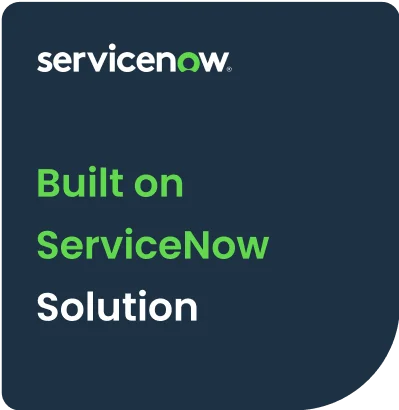Customer data management is defined as an enterprise process for gathering, storing, updating, accessing, and analyzing customer data.
Customers can interact with brands through a variety of channels, both online and offline. Store visits, social media interactions, website visits, digital asset downloads, targeted ad replies, survey responses, and other activities fall under this category. Companies who want to stay ahead in customer-centricity will combine data from various touchpoints into a single customer view that includes the most up-to-date information on the most recent encounters.
Customer data management’s ultimate purpose is to ensure that the data utilized by customer-facing teams, such as marketing, sales, and account management, is the most up-to-date, well-structured, and redundancy-free data possible. This is the same information that is supplied to marketing automation platforms and other customer-facing software that has a direct impact on lead generation, nurturing quality, and closing time; in other words, revenue.
Furthermore, at a time when customer connection with brands is increasingly digital and multichannel, data hygiene is the most significant concern for brands. Only 23% of organizations stated they could rely on CRM data for crucial decision-making in 2019, according to Forbes. Companies caught up with substandard customer data management procedures had their growth limited by data redundancies or an inability to gather and consolidate all interactions online and offline as a result of greater digitization since the COVID-19 lockdowns. On the other hand, organizations that had already implemented data management concepts benefited greatly and saw their balance sheets expand rather than contract. Data management is a critical component of growth and disaster management and recovery in 2022.
Customer data management is a three-step process that aims to achieve the end objective of having data that is no longer maintained in silos and is united enabling the organization and its workers to launch synchronized customer-facing campaigns and experiences. Here are the three essential steps:
- Capture and digitize
To manage data efficiently, the first step is to guarantee that all entry points are digitized and automated for the most error-free data entry possible. These ports of entry could range from online forms on your website to transactions made in an actual store. The idea is to digitize and correctly capture every potential point of brand or enterprise engagement.
- Archiving and updating
Any data collected during a client encounter must be sent into storage software, such as a CRM, survey software, or marketing platform. Data is kept and updated at this point, but it is still compartmentalized and not consolidated. As a result, the data is only updated on one platform and not across all platforms and departments.
- Unite and connect
This is the final step in the data unification process for whole customer data management. For sophisticated analysis, the connection can be established utilizing API linkages to interact between apps, or even better, using a customer data platform or data management platform.

Customer data management: factors to consider
Customer data management quality and outcome are influenced by a number of things. The following are some of the most important aspects:
Factor 1: Automation and digital transformation level
One of the most important factors affecting a company’s capacity to gather, update, and preserve consumer data is its digitization stage. Are product sales documented using barcodes or manually entered in a simple example of a company operating a brick-and-mortar store? Is the customer experience survey conducted on paper or online? Is the survey sent automatically in response to interaction triggers, or does it need to be sent manually by staff?
As a rule of thumb, the higher the level of digitization and automation, the lower the likelihood of human mistakes and the more accurate the data acquisition and updates. It’s not so much about staff discipline as it is about ensuring that human resources are focused on making decisions that improve the customer experience, while software and automation can take over repetitive jobs that can be completed more effectively and without errors.
Factor 2: Sales and marketing technology stack
Customer contact data is collected with one objective in mind: to unify and give the greatest data input for marketing and sales operations. If a corporation can afford it, the entire process of gathering and feeding data into another platform is usually done using a customer data platform (CDP) or a data management platform (DMP), although it can also be done utilizing app data exchange via APIs. In either instance, the sophistication of sales and marketing technology is crucial.
In other words, data collected cannot be effectively used until the appropriate technical tools are in place to absorb and integrate it into marketing initiatives. Hubspot is a good example of a sales and marketing automation solution. For email marketing, whether it’s Hubspot, MailChimp, or another comparable platform, demographic data must be provided or fed by API linkages from another program, such as a CRM. The email automation platform can then take over email delivery, collect and analyze response data, and feed it back into another system.
Factor 3: Data collection across all touchpoints
Customers can interact with a company in a variety of ways. The number of data capture touchpoints configured and the depth of data acquired are important elements in the quality of consumer data viewed and analyzed by your teams and other systems.
Incomplete perspectives of a customer’s stage of the buying journey or post-purchase experience result from missing information from customer interactions. Identifying all possible client touchpoints during the early stages of customer journey mapping and using it as a map for customer experience planning is therefore crucial. This will make digitizing and gathering data from these missing links much easier. Naturally, a company will consider the cost-benefit ratio while making any investment, including digitization. However, if the Covid lockdowns have pushed businesses in any direction, it is toward digitization.
Final Thoughts:
Customer data management, or CDM, is an umbrella word for a company’s data management strategy, tools, procedures, and standards. Data capture, storage, organization, and utilization are all part of customer data management.
CDM’s purpose is to transform customer data into rich, meaningful customer profiles that sales and marketing teams may utilize to better customer interactions. It allows businesses to better understand their consumers’ requirements and then tailor messaging to increase customer engagement and retention.



